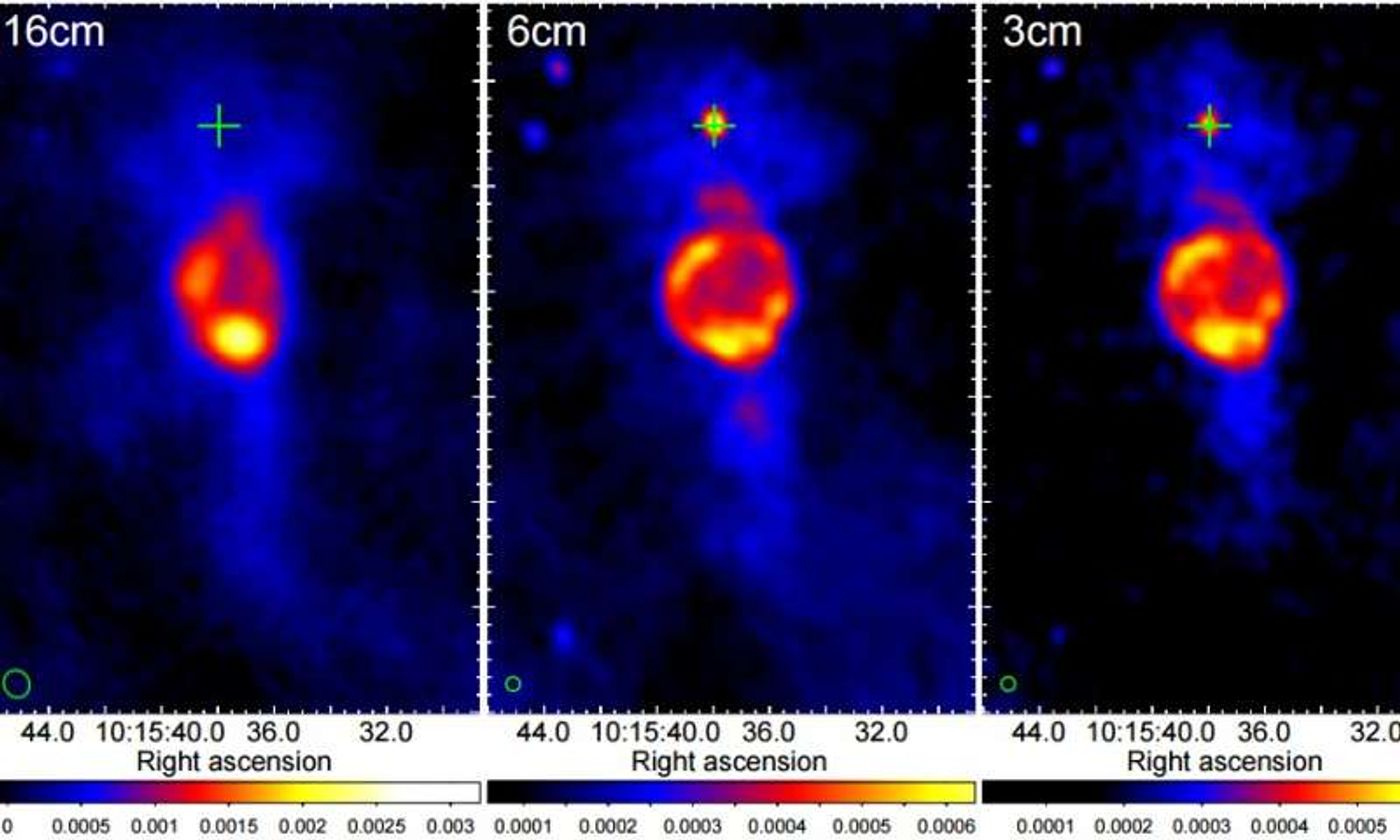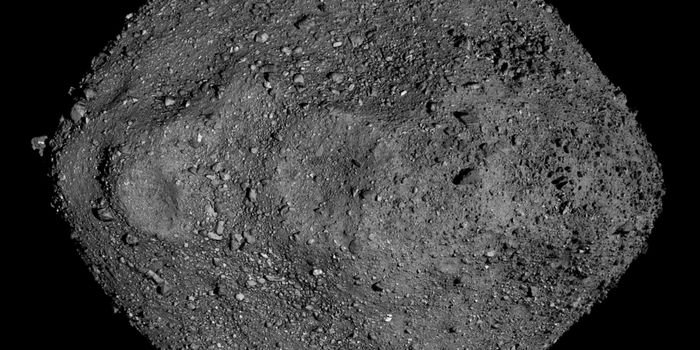This Pulsar is Feeding a Slow-Moving Bow-Shock Pulsar Wind Nebula
Astronomers regularly study pulsars because there is a lot about them we have yet to understand. On the other hand, one pulsar in particular is taking things to a whole new level.
Around 16,600 light years away from Earth is a 39,000-year-old pulsar dubbed PSR J1015-5719, which has a spin rate of approximately 0.14 seconds. While we’ve been studying it since 2003, it wasn’t until recently that space observation equipment picked up something extraordinary.
Image Credit: Ng et al., 2017
A paper published on arXiv.org that has been accepted for publication in The Astrophysical Journal by University of Hong Kong researchers describes what appears to be a synchrotron nebula associated with PSR J1015-5719; dubbed G283.1-0.59, it is also being classified as a bow shock pulsar wind nebula (PWN), given the circumstances.
Most of the time, synchrotron nebulae are difficult to see with optical or X-ray domains because they are electron-hungry and consume available energy very quickly, limiting emission. On the other hand, when a high-energy pulsar is in the neighborhood, it produces enough electrons to feed the electron-hungry structure, and this changes the circumstances a little bit.
Related: This might be the first pulsar ever discovered in the Andromeda galaxy
While G283.1-0.59 wasn’t spotted with X-ray or infrared space observation equipment initially, it was spotted after a new radio observation conducted with the Molonglo Observatory Synthesis Telescope (MOST).
The new research details a bubble-like object and exhibits both a head and a tail. PSR J1015−5719 appears to reside in the head of the structure, exhibiting a fan-shaped diffuse emission.
It exhibits a magnetic field that seems to switch directions quasi-periodically and notably has a low-Mach number; in other words, it’s moving very slowly. Although most observed bow shocks have higher-Mach numbers than G283.1-0.59, many of its characteristics are consistent with your typical bow shock, hence why it has been classified as one.
Related: This could be the slowest-moving pulsar ever discovered
As we touched on earlier, pulsars are actually feed the energy-hungry PWN, so it suddenly makes sense that we’re observing a pulsar in the same neighborhood as G283.1-0.59. Their close proximity to one another supports the hypothesis that the electrons being emitted by PSR J1015-5719 are working as a cosmic power outlet for the pulsar wind nebula.
Taking more time to study G283.1-0.59 just might yield some more fascinating results about how it came to exist and its unique properties that set it apart from the rest of the PWN out there.
Source: Phys.org









